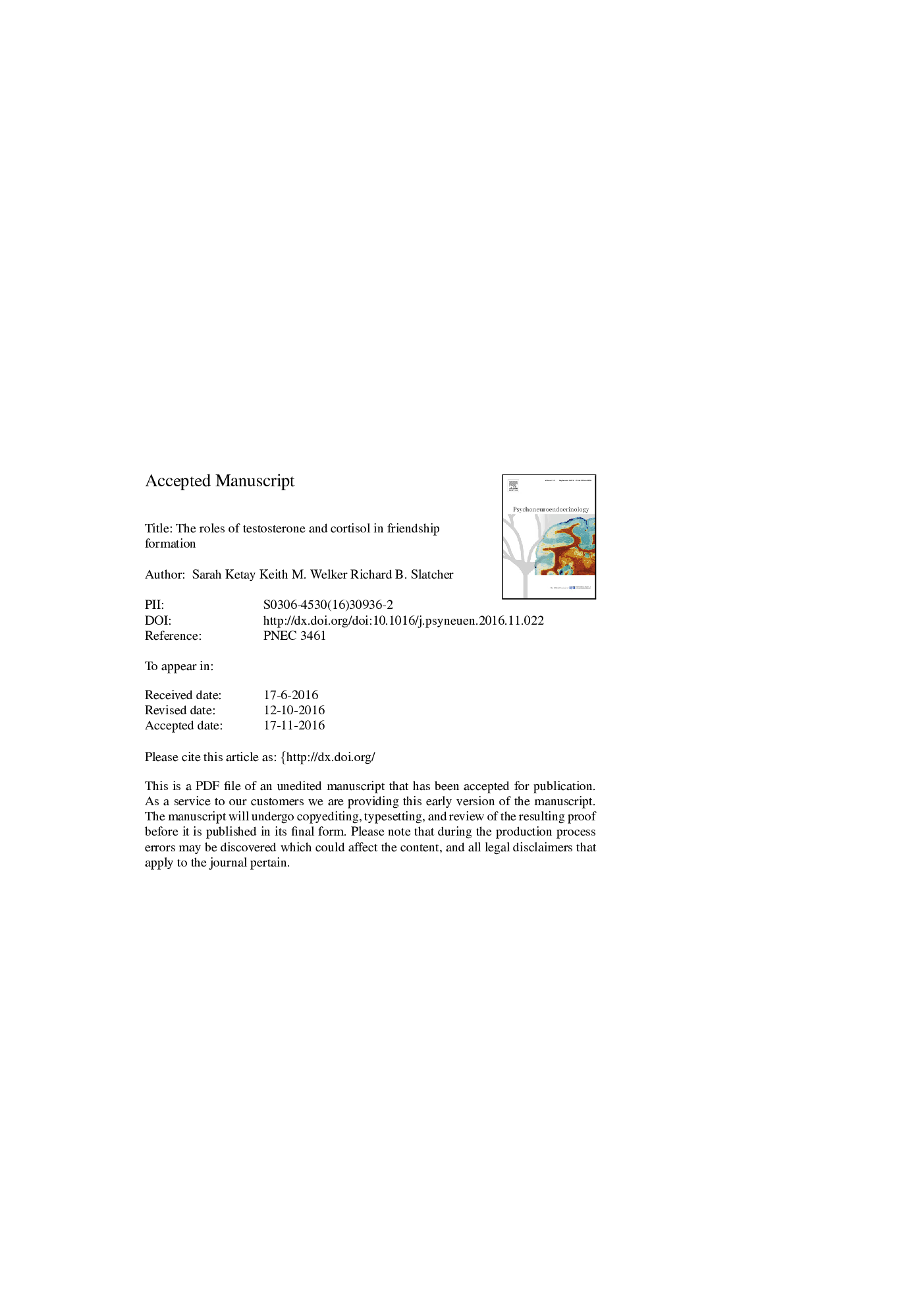| Article ID | Journal | Published Year | Pages | File Type |
|---|---|---|---|---|
| 4934582 | Psychoneuroendocrinology | 2017 | 36 Pages |
Abstract
Although research has investigated the neuroendocrine correlates of romantic relationships, the neuroendocrine correlates of friendship formation are largely unexplored. In two conditions, participants' salivary testosterone and cortisol were measured before and after a high versus low closeness activity with another same-sex participant. In the high closeness task, participants took turns answering questions that fostered increases in self-disclosure. The low closeness task fostered low levels of self-disclosure. Dyadic multilevel models indicated that lower basal testosterone and decreases in testosterone were associated with increased closeness between recently acquainted strangers. Our results suggest that people high in testosterone felt less close to others and desired less closeness. Further, lower basal cortisol and dynamic cortisol decreases were associated with greater closeness and desired closeness in the high closeness condition. Finally, we found that the partners of those who had lower cortisol desired more closeness. These findings suggest that lower testosterone and cortisol are linked to the facilitation of initial social bonds and that these social bonds may, in turn, be associated with changes in these hormones.
Related Topics
Life Sciences
Biochemistry, Genetics and Molecular Biology
Endocrinology
Authors
Sarah Ketay, Keith M. Welker, Richard B. Slatcher,
